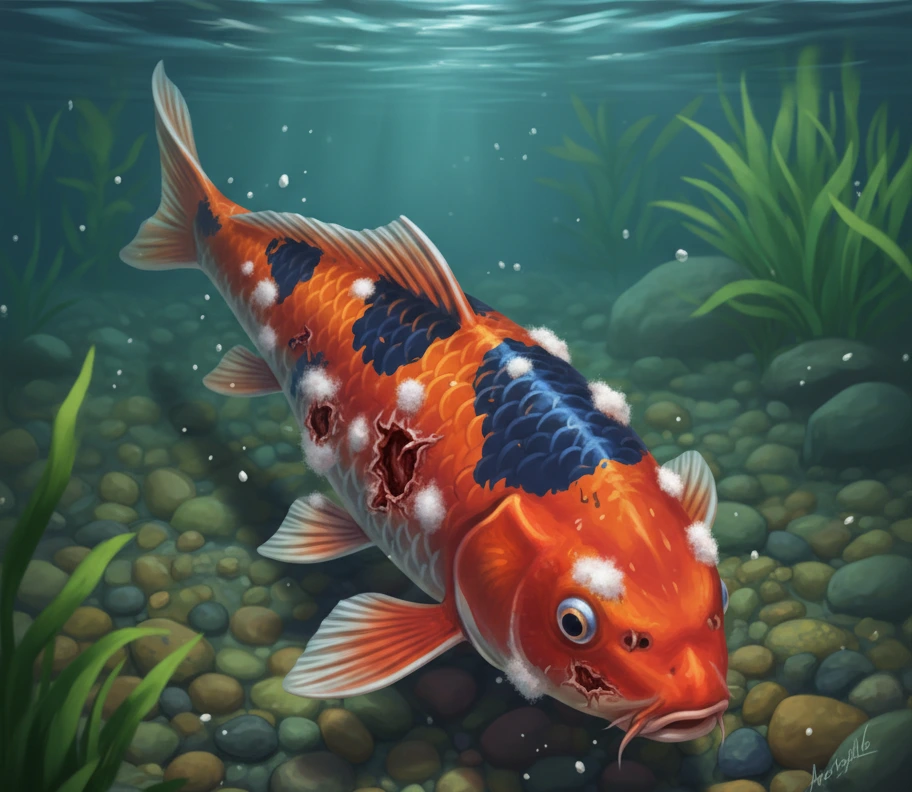Complete Guide to Treating White Spot (Ich) in Aquarium Fish: Causes, Symptoms, and Effective Treatments

If you own aquarium fish, one of the most alarming situations is seeing tiny white spots appear on their bodies. This condition, commonly called white spot disease or Ich, is caused by the protozoan parasite Ichthyophthirius multifiliis.
Ich is one of the most common and contagious diseases among freshwater and saltwater fish. If left untreated, it can spread rapidly, weaken your fish’s immune system, and even cause mass deaths in your aquarium.
In this comprehensive guide, you’ll learn how to treat white spot on aquarium fish, including its causes, symptoms, effective treatment methods, and long-term prevention strategies.
What Is White Spot Disease (Ich)?
White spot disease is caused by a protozoan parasite that attaches to the skin, fins, and gills of fish. These parasites appear as tiny white cysts, resembling grains of salt.
The parasite has a unique life cycle, which makes treatment challenging. It goes through an attached stage (on the fish) and a free-swimming stage (in the water). Most medications only target the parasite during its free-swimming phase, which is why timing and consistency are crucial.

Common Causes of White Spot in Aquarium Fish
- Poor water quality – High ammonia and nitrite levels stress fish and make them vulnerable.
- Stress – Sudden environmental changes, overcrowding, or poor diet weaken immunity.
- Introducing new fish without quarantine – New fish often carry the parasite without visible signs.
- Sudden temperature fluctuations – Rapid temperature drops or spikes can trigger outbreaks.
Read more about how to maintain optimal water quality here →
Early Symptoms of White Spot Disease
- Tiny white spots on the body, fins, or gills.
- Fish rubbing or scratching against tank decorations or walls.
- Loss of appetite or refusal to eat.
- Gasping for air at the surface or near the filter outlet.
- Lethargy or erratic swimming behavior.
How to Treat White Spot on Aquarium Fish
1. Quarantine Infected Fish
Immediately separate infected fish into a quarantine tank to prevent the disease from spreading.
- Use water from the main tank to reduce stress.
- Keep the quarantine tank clean and monitor water parameters.
Learn more about setting up a quarantine tank →
2. Gradually Raise the Water Temperature
Ich parasites multiply faster in warmer water, which shortens their life cycle and makes them vulnerable to medication.
- Increase the temperature by 1–2°C per day until it reaches 28–30°C (82–86°F).
- Use an aquarium heater with an accurate thermostat.
- Ensure your fish species can tolerate higher temperatures before applying this method.
3. Add Aquarium Salt
Salt is a natural treatment that helps eliminate parasites and improve gill function.
- Recommended dosage: 4 grams per liter (1 tablespoon per 5 gallons of water).
- Always dissolve salt before adding it to the tank.
- Do not use iodized table salt.
4. Use Anti-Ich Medications
For severe infections, use proven Ich treatments. Popular options include:
- Methylene Blue – Effective and relatively safe for most fish.
- Malachite Green – Strong but must be dosed correctly.
- Formalin or Copper Sulfate – Highly effective but toxic to sensitive fish species and invertebrates.
Important: Remove activated carbon from the filter during medication, as it will absorb the chemicals and render treatment ineffective.
For detailed instructions, check this expert guide on Ich treatment by The Spruce Pets.
5. Improve Oxygenation and Maintain Water Quality
Most medications reduce oxygen levels in the water. Use an air stone or increase surface agitation to ensure adequate oxygen.
- Perform 20–30% water changes every 2–3 days during treatment.
- Vacuum the substrate to remove any parasites or cysts.
How Long Does Treatment Take?
Treatment usually takes 7–14 days depending on the severity of the infection and the life cycle of the parasite. Even if the white spots disappear, continue treatment for a few extra days to eliminate any remaining free-swimming parasites.
How to Prevent White Spot Disease
- Quarantine new fish for at least 2 weeks before adding them to your main tank.
- Maintain water quality by performing regular water tests and changes.
- Avoid overstocking your aquarium to reduce stress and aggression.
- Provide a balanced diet to boost your fish’s immune system.
How to Keep Your Aquarium Fish Healthy → VibeHealthly Prevention Tips
Common Mistakes to Avoid
- Stopping treatment too early.
- Forgetting to remove activated carbon during medication.
- Overusing salt or medications that can harm sensitive species.
Conclusion
White spot disease (Ich) is highly contagious and dangerous, but with the right approach, your fish can make a full recovery. The key is early detection, consistent treatment, and proactive prevention.
Explore more fish health tips on VibeHealthly → Visit our Fish Care Hub
Recommended Resources:
- The Spruce Pets: How to Treat Ich in Aquarium Fish
- Wikipedia: Ichthyophthirius multifiliis
- Practical Fishkeeping: Treating White Spot in Fish

